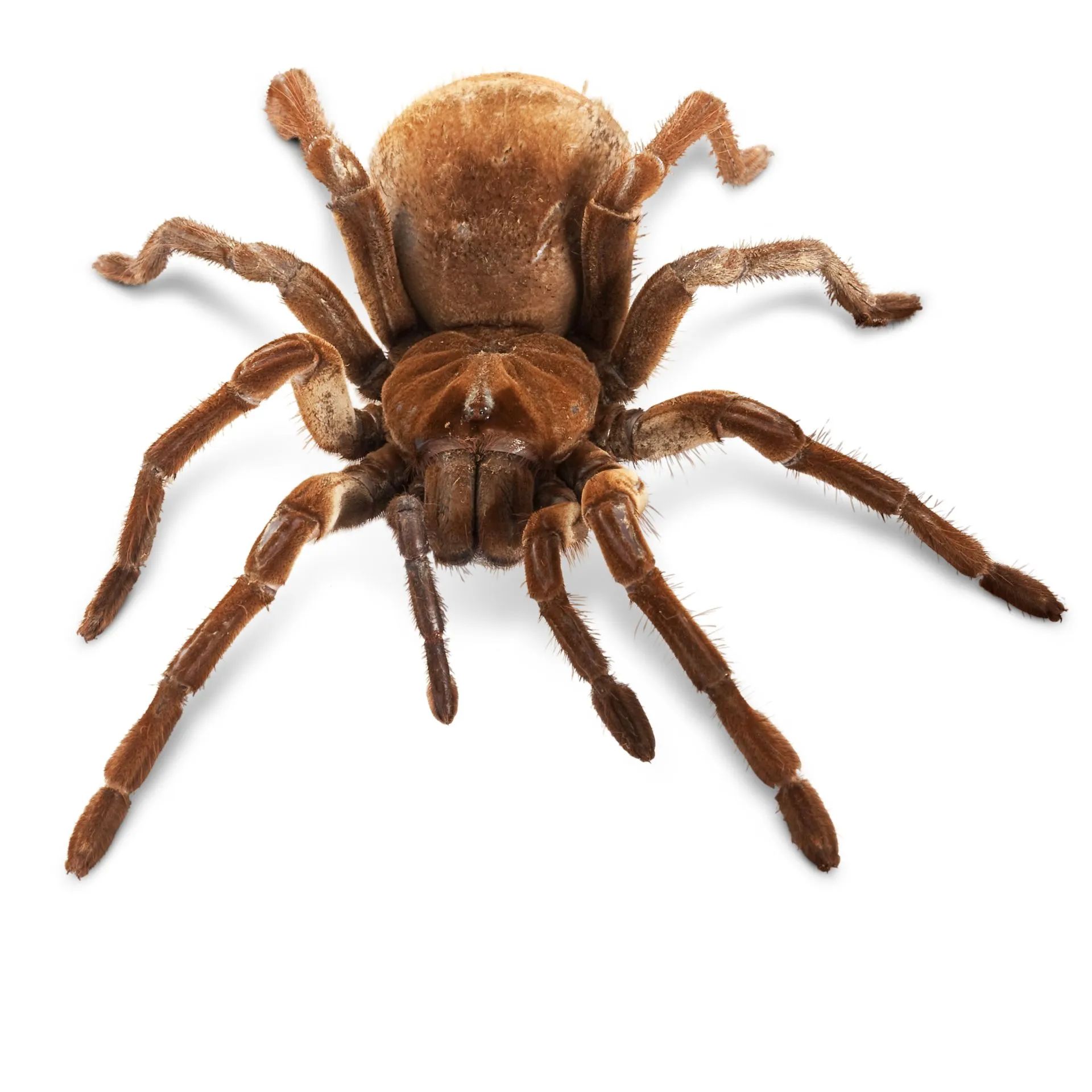Goliath Birdeater Tarantula Facts: Introduction
The Goliath Birdeater Tarantula (Theraphosa blondi) is one of the most fascinating and imposing creatures in the arachnid world. This colossal spider is not only the largest tarantula species but also one of the largest spiders on Earth, captivating the attention of both arachnophiles and those simply curious about the wonders of nature. This article will delve into the world of the Goliath Birdeater, exploring its characteristics, habits, and the amazing facts that make it a truly remarkable species. Prepare to be amazed by this incredible predator and learn more about what makes it a unique inhabitant of the rainforests.
What is a Goliath Birdeater Tarantula
The Goliath Birdeater Tarantula is a species of tarantula native to the rainforests of northern South America. It’s known as the Goliath Birdeater due to its size and the fact that it occasionally consumes small birds, though its diet primarily consists of insects and other invertebrates. These spiders are a popular subject of interest due to their size and the mystique surrounding them, however, they are not often kept as pets due to their size and defensive behavior. The Goliath Birdeater is a terrestrial species, meaning it lives on the ground, and builds burrows or shelters under rocks and fallen logs.
Appearance and Size
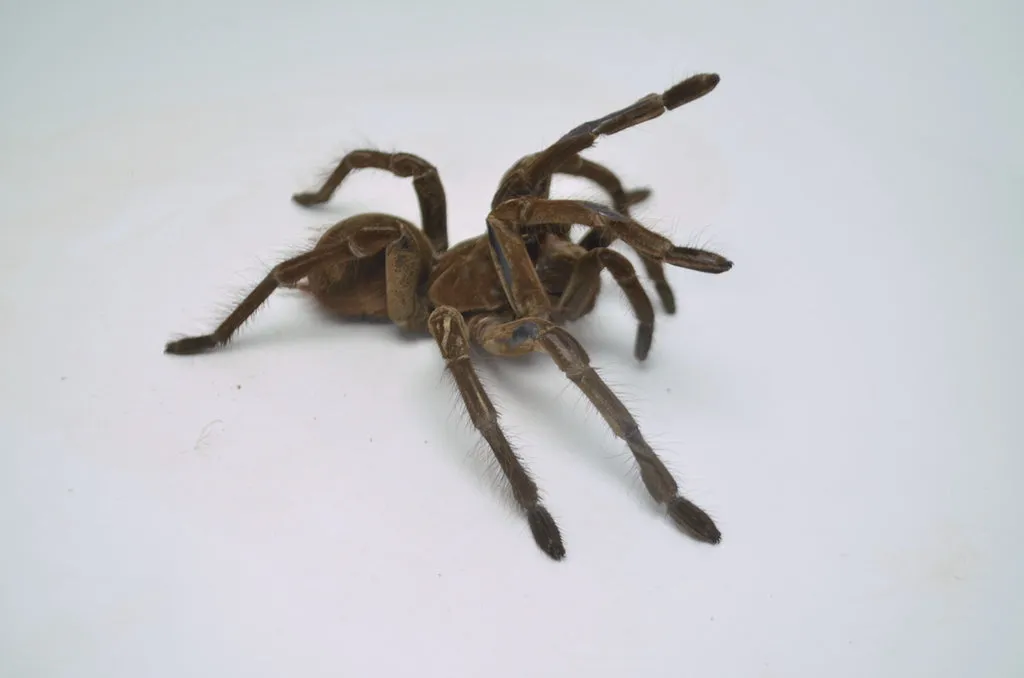
The Goliath Birdeater lives up to its name, with females often reaching a leg span of up to 12 inches (30 cm) and weighing over 6 ounces (170 g). Males are typically smaller. Their bodies are covered in dense, reddish-brown hairs that help with camouflage and sensory perception. They possess large fangs (chelicerae) used for injecting venom and capturing prey. When viewed up close, the size of this tarantula is truly impressive. Their overall bulk is a testament to their place at the top of the food chain in their natural habitat, and their large size helps them to defend against predators.
image: goliath-birdeater-tarantula-size.webp
Habitat and Distribution
These impressive spiders are native to the rainforests of northern South America, including countries like Brazil, Venezuela, Guyana, Suriname, and French Guiana. They thrive in humid environments, often near swamps and marshes, where they can find suitable shelter and a plentiful supply of food. The Goliath Birdeater typically creates burrows in the ground or utilizes existing shelters under logs and rocks. The dense vegetation of their habitat provides excellent camouflage, allowing them to ambush prey effectively. Their distribution is somewhat limited due to their specific environmental needs. They require a humid climate to survive, which is why they are mostly found in the rainforest.
image: goliath-birdeater-tarantula-habitat.webp
Diet and Feeding Habits
Despite their name, Goliath Birdeaters rarely eat birds. Their diet mainly consists of insects, worms, and other invertebrates found on the forest floor. They are opportunistic predators, also consuming small vertebrates such as lizards, frogs, and even small snakes. The tarantula uses its fangs to inject venom, which paralyzes its prey. They then use digestive enzymes to liquefy the prey’s insides, allowing them to suck up the nutrients. The Goliath Birdeater is a patient hunter, often waiting in ambush for an unsuspecting meal to come within striking distance. The feeding process is a remarkable display of nature’s efficiency.
image: goliath-birdeater-tarantula-feeding.webp
Goliath Birdeater Tarantula: 5 Amazing Facts
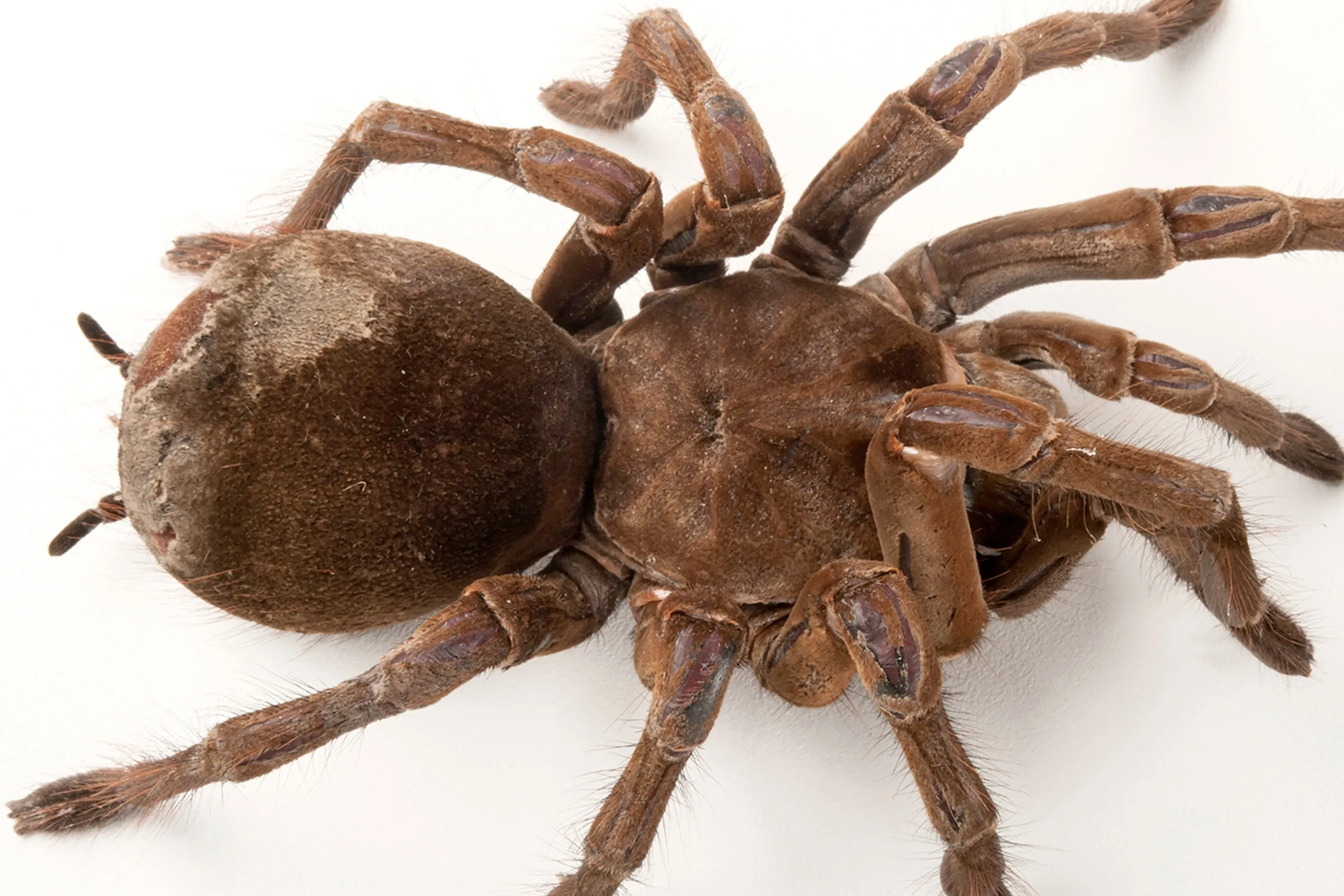
Fact 1 Amazing Size
As mentioned before, the Goliath Birdeater is the largest tarantula in the world, boasting a leg span that can reach up to a foot! This impressive size makes it a formidable predator and a sight to behold. Their sheer bulk sets them apart from other spider species, making them truly stand out in the animal kingdom. The size of these spiders underscores their predatory prowess and their position within the ecosystem. Their large size means that they have to consume a lot of food in order to survive, and they are very active hunters. This is one of the main reasons people find them to be so fascinating.
image: goliath-birdeater-tarantula-size.webp
Fact 2 Powerful Venom
While their venom is not typically fatal to humans, the Goliath Birdeater’s bite can be quite painful and cause significant discomfort. The venom causes effects like intense pain, muscle cramps, and nausea. The primary use of the venom is to subdue prey, not to kill or inflict serious harm on larger animals. While the bite is not deadly, it’s still something to avoid. This fact should be kept in mind when considering the Goliath Birdeater. It’s important to handle it safely and to know what to do if you happen to get bit.
image: goliath-birdeater-tarantula-venom.webp
Fact 3 Lifespan
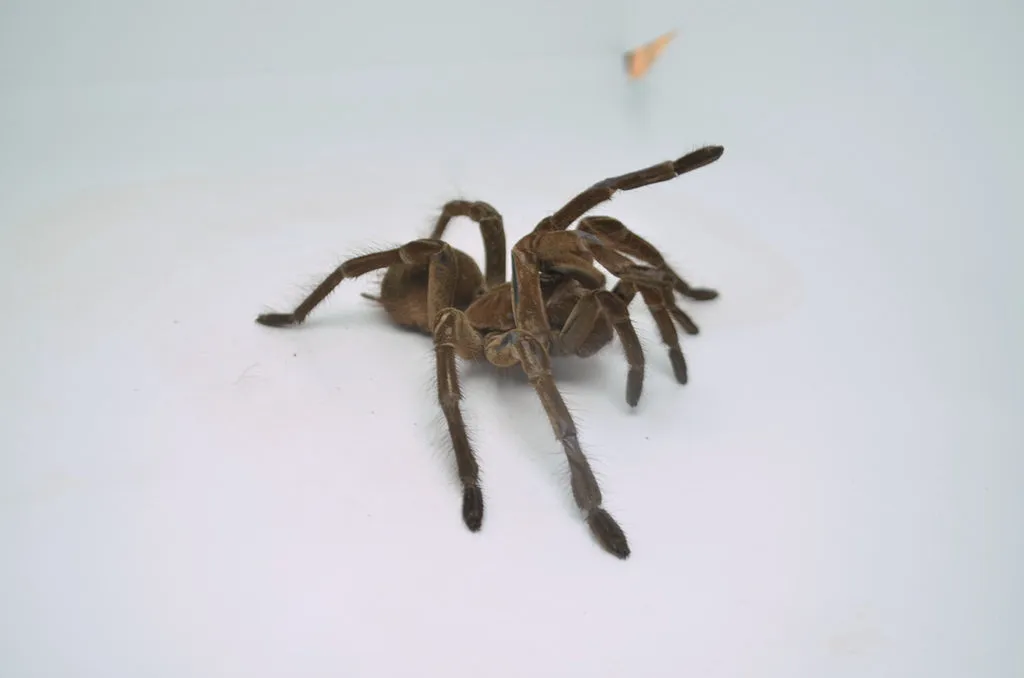
Female Goliath Birdeaters can live for an impressive 15 to 25 years, making them one of the longest-lived spiders. Males, on the other hand, have a shorter lifespan, typically living only 3 to 6 years after reaching maturity. This significant difference in lifespan is common among tarantula species. The long lifespan of females allows them to reproduce multiple times, contributing to the survival of the species. The fact that females can live for so long makes them even more valuable as pets if you are interested in having one.
Fact 4 Unique Bristles
Goliath Birdeaters have urticating hairs on their abdomen, which they can flick at potential threats. These hairs are a defense mechanism, causing irritation and discomfort upon contact. The hairs are barbed and can penetrate the skin, causing an itchy rash. When threatened, the tarantula will rub its legs against its abdomen, launching the hairs into the air. This defense strategy helps protect them from predators in their natural habitat. It is important to avoid contact with these hairs if you are handling this tarantula or cleaning its enclosure.
Fact 5 The Feeding Frenzy
Goliath Birdeaters are known for their voracious appetites. They can consume large quantities of food, and often eat several times per week, especially when they are young and growing. Their feeding behavior can be quite dramatic. The tarantulas quickly pounce on their prey. The spiders then inject them with venom to immobilize them. They then use enzymes to digest the prey before consuming the liquefied meal. They are patient hunters who will take advantage of any opportunity to eat. This feeding habit, combined with their large size, makes them fascinating to observe.
Goliath Birdeater Tarantula: Behavior and Care
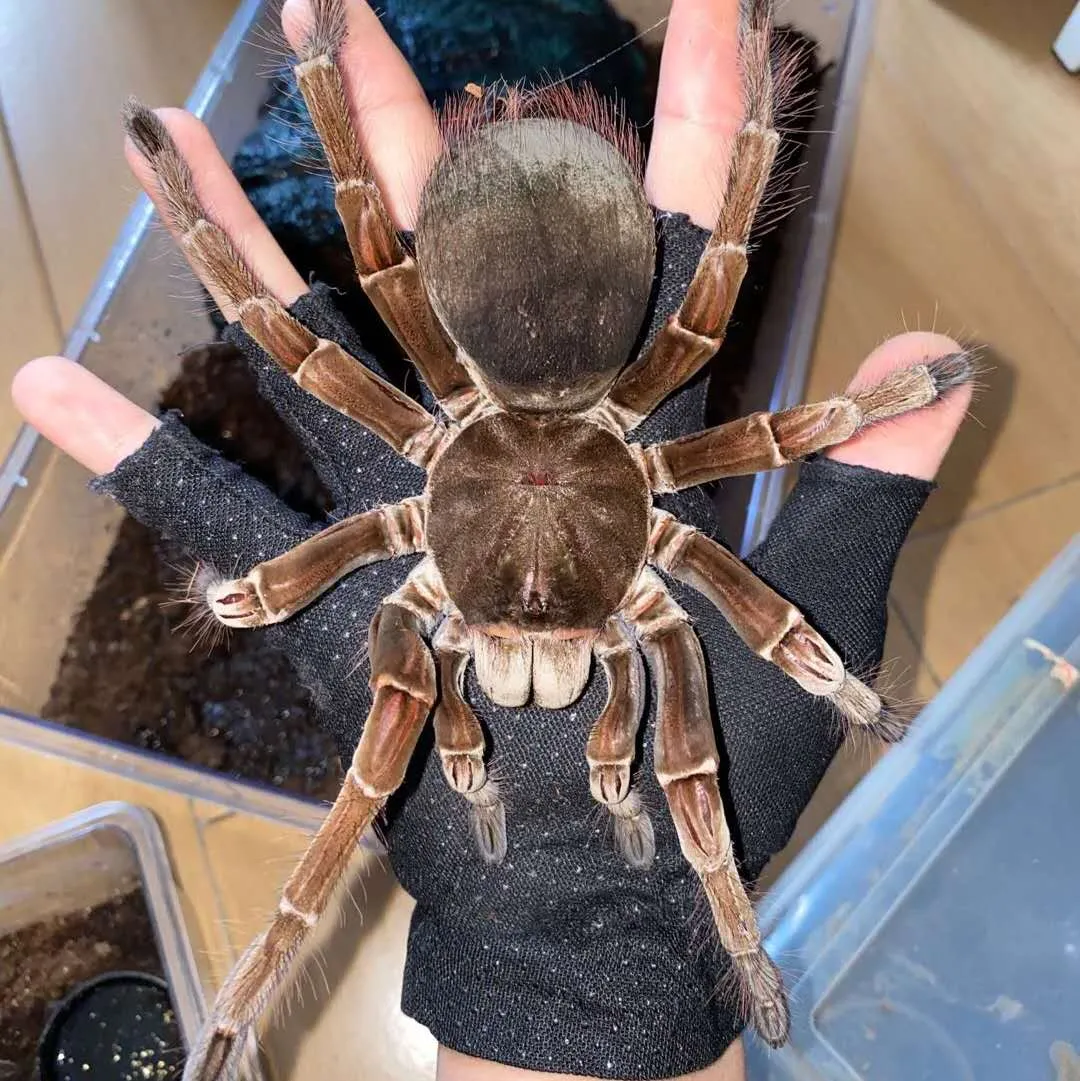
Handling and Safety
Handling a Goliath Birdeater should be done with extreme caution, if at all. They are defensive creatures and can bite or flick urticating hairs. It is recommended to observe them within their enclosure. If you need to handle them, use a long pair of tongs to move them. Avoid direct contact with the spider’s body to minimize the risk of bites or irritation from the hairs. Always wash your hands thoroughly after any interaction with the tarantula or its enclosure. This will help to reduce the chances of any sort of infection.
image: goliath-birdeater-tarantula-handling.webp
Enclosure Requirements
A Goliath Birdeater requires a large, secure enclosure. A 20-gallon long tank or larger is generally suitable for an adult. The enclosure should have a substrate of several inches of peat moss, coconut fiber, or a similar material to allow for burrowing. They need a water dish for hydration, a hide, and a temperature gradient between 75-85°F (24-29°C). The enclosure should also be well-ventilated to prevent mold and mildew. Regularly cleaning and maintaining the enclosure is crucial for the health and well-being of the tarantula. By providing the ideal enclosure, it ensures they thrive in captivity.
image: goliath-birdeater-tarantula-enclosure.webp
Feeding and Hydration
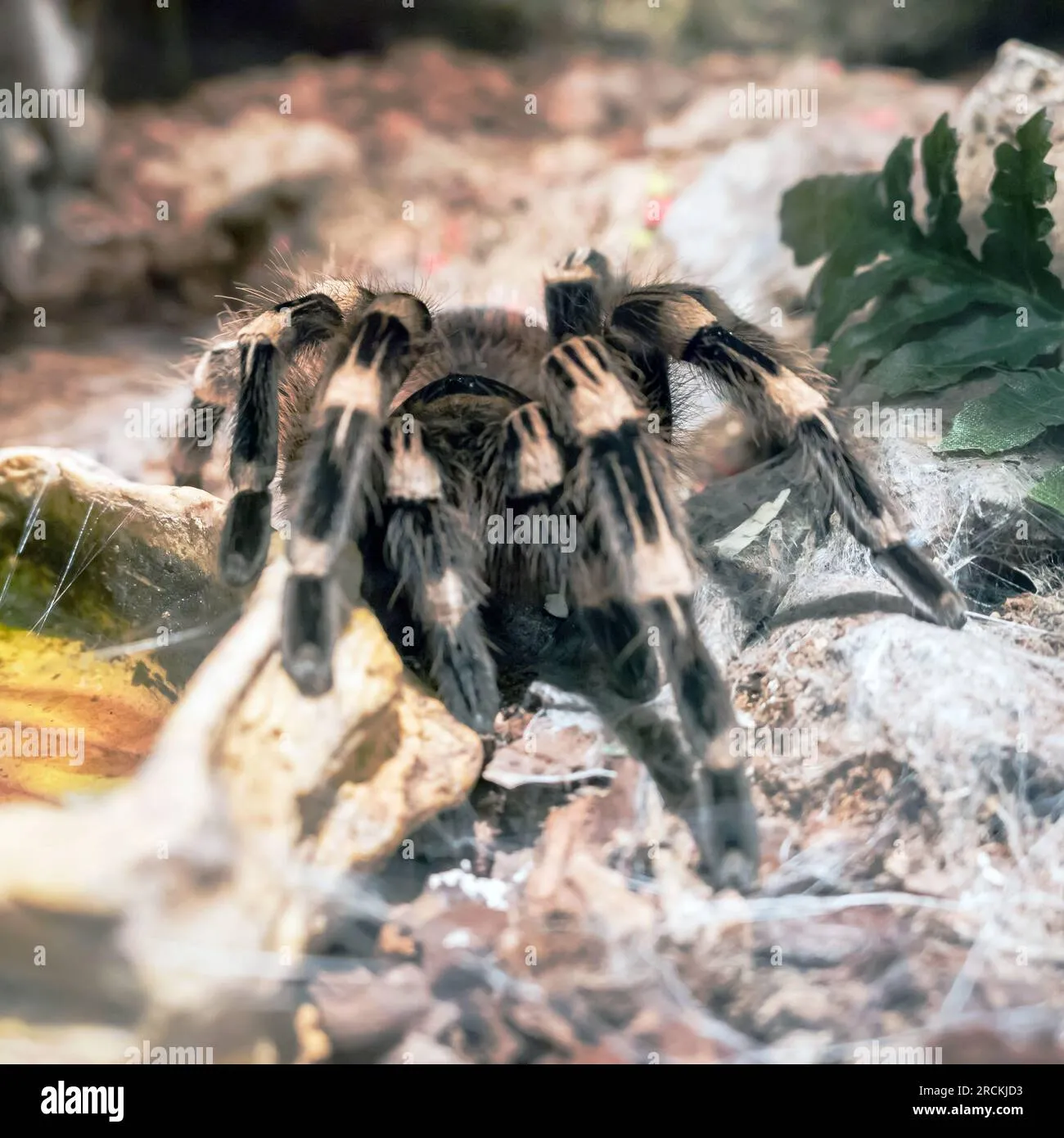
Feeding a Goliath Birdeater involves providing a varied diet of live insects, such as crickets, mealworms, and roaches. The frequency of feeding depends on the tarantula’s size and age. Young spiders should be fed more often than adults. Always ensure that the prey is smaller than the tarantula itself to prevent any issues. Fresh water should always be available in a shallow dish. It’s crucial to monitor the tarantula’s eating habits and adjust the feeding schedule accordingly to promote its health. Food should be removed if it is not eaten within a day or two.
Common Health Issues
Goliath Birdeaters can experience health issues if they are not cared for properly. These can include fungal infections, dehydration, and problems related to molting. It is important to maintain proper humidity levels and provide a clean environment to prevent health problems. If you notice any changes in behavior, such as lethargy or loss of appetite, it’s best to consult with a veterinarian experienced in exotic animals. Monitoring the spider closely is essential to ensuring the health of the Goliath Birdeater.
Goliath Birdeater Tarantula: Conclusion
The Goliath Birdeater Tarantula is an incredible species that sparks curiosity and fascination. From its immense size to its unique behaviors, this spider offers a captivating glimpse into the world of nature’s marvels. While they may not be the easiest pet to care for, their presence is one that will leave anyone amazed. These creatures also remind us of the importance of understanding and respecting the diversity of life on Earth. So, the next time you encounter a Goliath Birdeater, take a moment to appreciate its remarkable features and its essential role in its ecosystem.
image: goliath-birdeater-tarantula-conclusion.webp
